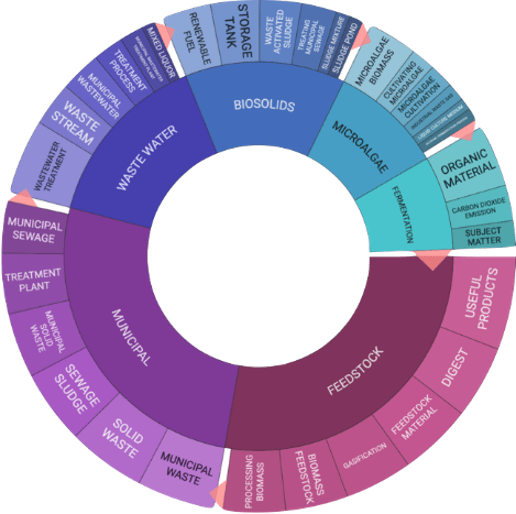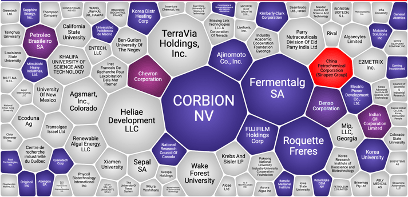AiPi’s patent strategies typically begin with generating landscapes that visually show existing patent rights in a technology sector relevant to the client’s R&D operations.
Defensively, AiPi compares the client’s planned and commercialized technology to those patent rights in the context of global clearances and freedom to operate determinations, such as to identify infringement concerns.
Offensively, AiPi identifies white spaces in the landscape where no patent rights currently exist. AiPi ideates with the client to invent within those white spaces to enable strategic patent portfolio creation. We draft patent applications directed to those inventions in both a strategic and cost effective manner. For example, AiPi often includes many separately patentable inventions in a single omnibus disclosure, to maximize the breadth of protection while delaying government filing fees and other costs, and sequences the filing of patents overseas to delay or otherwise defer significant overseas filing costs. AiPi’s approach results in much more comprehensive patent protection than the traditional approach – where a patent application is merely directed to single inventive concept, which enables competitors to easily design around.
The creation of strategic patent portfolios often takes into account each client’s business goals. For clients anticipating an exit via acquisition, AiPi will create and reserve patent protection that may be meaningful to potential acquiring entities, and that may otherwise increase the client’s valuation. We typically anticipate that our clients will obtain a valuation many times the cost of the patent procurement.
Traditionally, an inventor would meet with a law firm attorney and explain the invention so that the attorney can draft and file a patent application covering the invention, and later prosecute the patent application to obtain a patent. However, this process is not strategic and at best only results in protection of the specific inventive concept communicated to the law firm attorney. Very differently, AiPi is able to analyze all existing patent rights and the inventor’s business goals, and determine features related to the invention that should be patented to then create a truly strategic patent portfolio. AiPi’s patent strategy and strategic patent portfolio are then usable to direct or at least inform product development strategy, increase company valuation, and help implement business goals such as to facilitate acquisition.
AiPi’s strategic patent creation efforts are typically applied via the following 3-Phase approach.

In the First Phase, AiPi creates a novel patent landscape that visually shows all existing patent rights in a technology sector relevant to the client’s commercialized products or services. Traditional “patent landscapes” provided by patent search firms provide only limited insights. AiPi’s inventive landscapes are completely different because they allow us to drill-down into the categorized data and extract meaningful insights in Phase 2.

In the Second Phase, AiPi uses the patent landscape from Phase 1 to create a patent strategy that involves both offensive and defensive components. Offensively, AiPi identifies white spaces in the landscape where no patent rights currently exist, and ideates with the client to invent within those white spaces to enable strategic patent portfolio creation.
Defensively, AiPi compares the client’s planned and commercialized technology to existing patent rights in the context of global clearances and freedom to operate determinations, so as to identify infringement concerns.
Importantly, this patent strategy is then usable to drive product development strategy. Traditionally, business leaders of tech companies instruct R&D to create/invent next generation products. Once the next generation products are developed, R&D instructs a patent law firm to obtain patent protection and possibly perform a clearance analysis, which results in limited patent protection (such as obtaining one patent per product, which is typically vulnerable to design-arounds by competitors).
AiPi’s approach is implemented during product development so that the insights obtained in Phase 2 can be used to affect the product development strategy, such as by either recommending new features/implementing technologies that are protectable, or avoiding other features/implementing technologies that are protected by others.
In the Third Phase, AiPi implements the intellectual property strategy of Phase 2 by drafting patent applications directed to those inventions in both a strategic and cost effective manner.
AiPi typically includes many separately patentable inventions in a single omnibus disclosure, to maximize the breadth of protection while delaying government filing fees and other costs, and sequences the filing of patents overseas to delay or otherwise defer significant overseas filing costs.
AiPi’s approach results in much more comprehensive patent protection than the traditional approach – where a patent application is merely directed to a single inventive concept, thereby enabling competitors to easily design around and effectively hijack the inventive technology.AiPi will also identify countries in which patent protection needs to be obtained, such as in countries that will be the focus of significant commercialization efforts, and in which broad and enforceable patent protection can be obtained. AiPi creates and implements this global patent strategy so as to minimize costs, while optimizing benefits of such protections.

